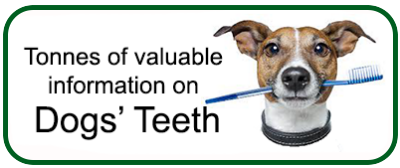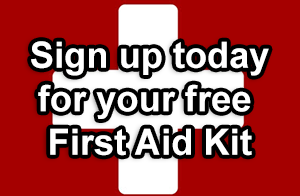What YOU can do to
take care of your dog's dental care at home
Dog dental care at home
Two factors need to be present for establishing effective daily brushing
Dog dental care at home
If you are feeding commercially manufactured dog food, then as with humans, the most effective method of controlling the formation of plaque on your dog's teeth is by brushing after each meal.
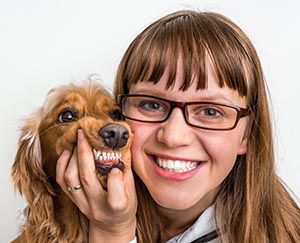
If brushing is not an option, then make a practise of giving your dog food removers e.g. chicken necks and Pigs Ears work well for dogs. That said, make sure that the pigs ears are from the USA, Canada, UK Australia or New Zealand, and not imitations made from Rawhide which can be deadly for dogs.
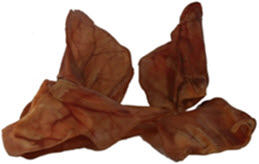
In this segment however, our focus is on owners who for one reason or another choose to feed their dogs comercially manufactured food.
And in this case the importance of establishing a regular daily routine of brushing their dog's teeth. Plaque busters and following meals with food removers such as Pigs Ears as shown above, are covered in our article of How To Clean Your Dog's teeth
Two factors need to be present for establishing effective daily brushing

- A patient owner, and
- A cooperative pet! Having a willing participant depends very much on the age of the dog when the toothbrush is introduced, how it is introduced and the praise/rewards/bribery offered by YOU for his or her compliance!
Please note, human toothpastes are not palatable or suitable for dogs. Human tooth-pastes are meant to be rinsed out and dogs are not able to rinse.
There is an array of commercially prepared toothpastes available, specially designed for animals that come in meat and poultry flavours which most pets will accept.
If you would care to use "Only Natural" products for your dog's dental care, please refer to our Dog Dental Care Products page.
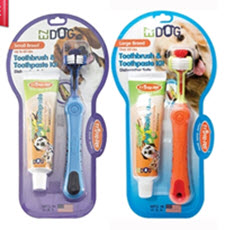
For you convenience we have a huge online range of safe allergy free dental products, ranging from toothpastes and toothbrushes, plaque busters, gels, dental, dental chews and so much more.
If you start brushing when your pet is a puppy then you won't meet with much resistance and your pup will accept it as "his or her due".
However if you adopt an older dog, which has had no previous experience of having someone touching his mouth, let alone the added intrusion of a toothbrush with paste on it, your task will be much harder.
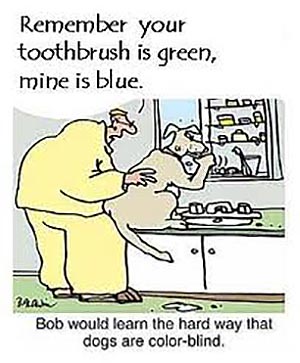
Similarly, your job will be that little bit harder, if you have only just realised the benefits of brushing and your dog is a mature dog who you have nutured since he or she was a pup.
Its a good idea to start off by choosing a flavour of paste which you know your dog likes, then try putting some paste on your finger and rubbing it around its gums. This way your pet will look forward to licking the paste and more to the point having you touching his or her mouth.
From there on in, you can gradually introduce a small tooth brush or a thimble brush, which ever you find easiest to use.

Your pet may only allow you to do one or two teeth in the beginning. The key to your success is endless praise/encouragement, treats, and piles of TLC. Eventually, your patience will be rewarded and you will be able to do its entire dentition.
This process could take weeks or months rather than days, but please don't give in or give up, because maintaining healthy teeth and gums for your dog can add up to an extra five years to its life expectancy. And as we say to our dogs "they are worth it!"
This article and information forms part of the Carole's Doggie World Library and is presented for informational purposes only.The information is not intended to be a substitute for visits to your local vet. Instead, the content offers the reader information researched and written by Carole Curtis for www.carolesdoggieworld.com

